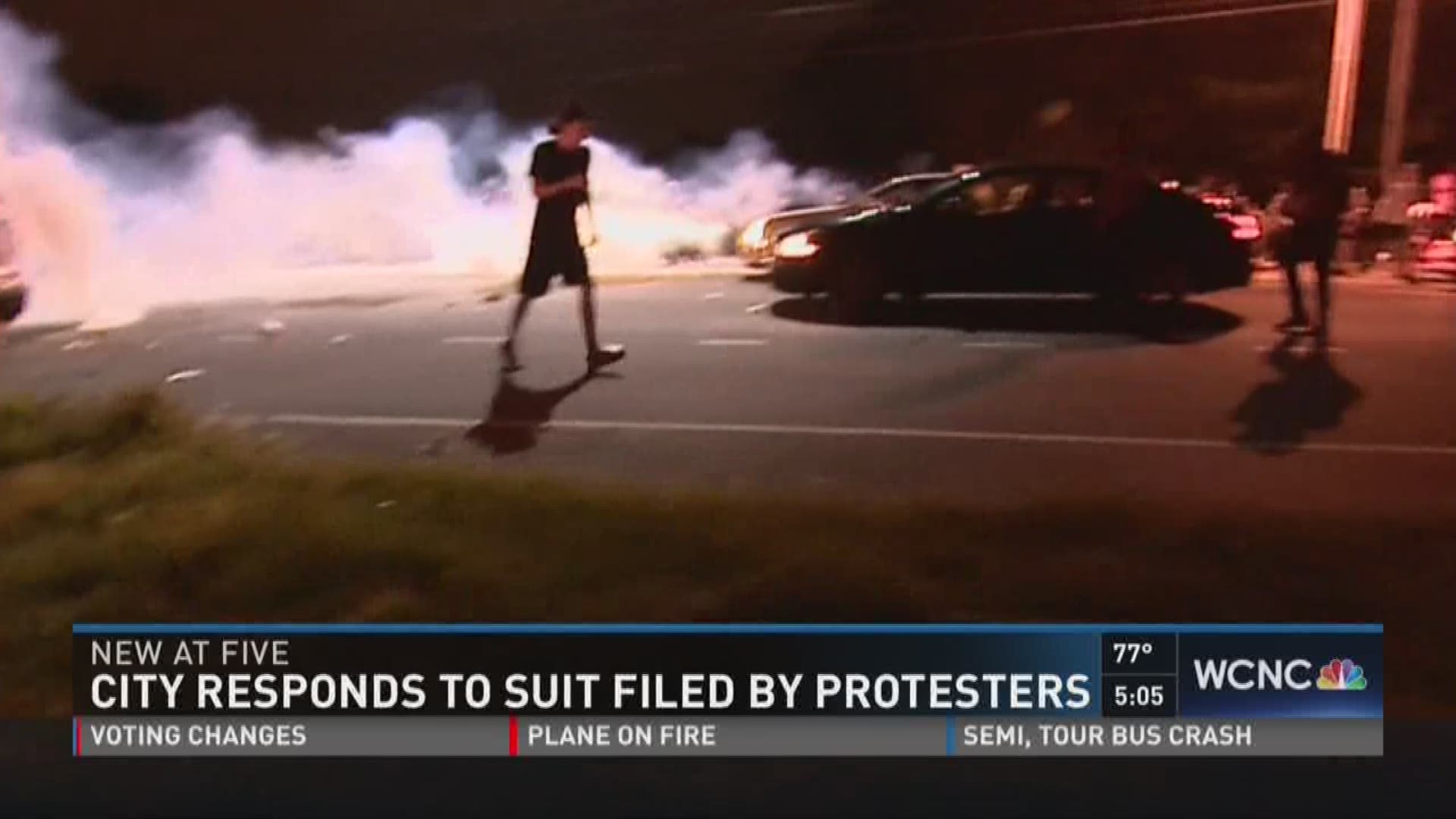CHARLOTTE, N.C. – Charlotte-Mecklenburg Police are detailing the response used to quell sometimes-violent demonstrations that occurred following the shooting death of Keith Scott.
The details, including the use of tear gas and grenades that are packed with rubber pellets, are spelled out in the city’s response to a suit charging the city and the department with using excessive force against peaceful demonstrators.
Much of the new detail comes from an affidavit filed by CMPD Major Mike Campagna.
He writes that in the hours after Keith Scott was shot and killed by a CMPD officer, demonstrators began gathering at the apartment complex where Scott lived.
Campagna described the incidents where he said demonstrators became violent, trapping one officer in his patrol car.
The riot squad was called and a CATS bus was used to evacuate detectives and evidence technicians who were still trying to process the original shooting scene.
The affidavit says police fired a stinger grenade that was filled with rubber pellets, an irritant known as OC Powder and a flash bomb.
Eventually demonstrators moved on to I-85, shutting down the roads.
There, Campagna describes the looting of two trucks that were then set on fire.
During the second night of demonstrations, Campagna describes how Justin Carr was shot and killed near the Omni Hotel, saying police had difficulty getting to him to carry him out of the scene.
He also said the situation became tense when demonstrators claimed Scott was killed by police.
The affidavit says there was more violence when police were pelted with water bottles, rocks and a wrench, which hit one officer on the arm.
Campagna writes, “At some point a fuse-lit explosive device was thrown at the officers,”
On the third night of demonstrations, Campagna credits local clergy with helping to control the crowd, placing themselves as a barrier between demonstrators and police.
City attorneys wrote the court saying assaults on police officers are not protected by the first or second amendment.

